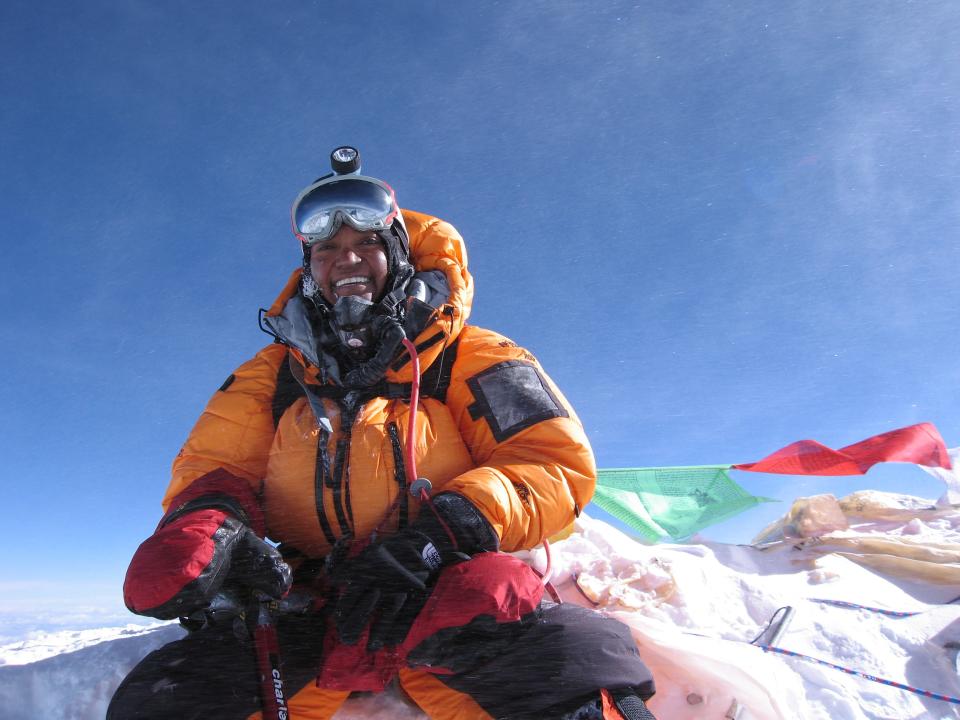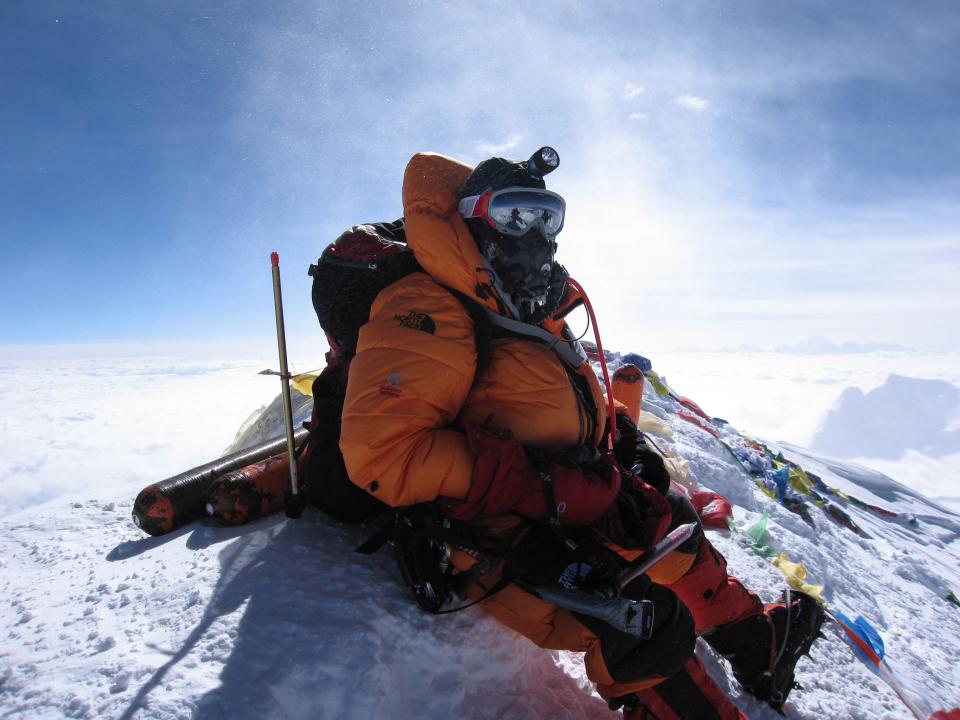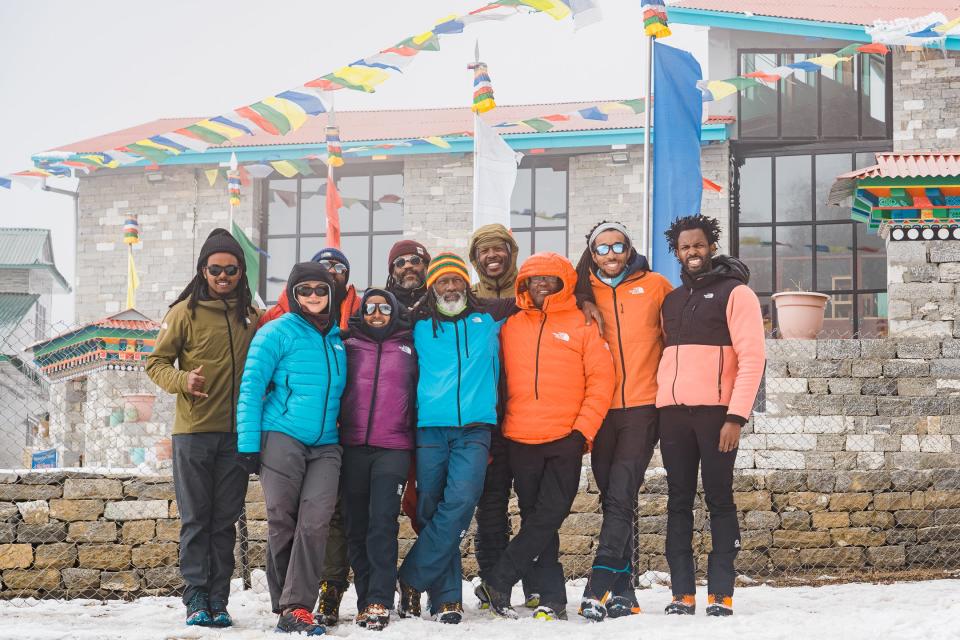Sophia Danenberg, Full Circle Everest take big step for Black climbers on Mount Everest
In February for Black History Month, USA TODAY Sports is publishing the series 28 Black Stories in 28 Days. We examine the issues, challenges and opportunities Black athletes and sports officials continue to face after the nation’s reckoning on race two years ago.
It often comes down to one small step in front of the other for the hundreds of people who attempt each year to summit Mount Everest.
The Full Circle Everest team is following in the footsteps of the mountaineers that came before, aiming to be the first all-Black American expedition to make it to the top of world’s highest mountain.
The team will be making their ascent on the south side of the mountain with a summit push likely later this spring, but their journey has already begun.
Mount Everest sits at the border of Nepal and China (Tibet), and it is also known as Sagarmatha or Chomolungma in those countries, respectively.
“Expedition” isn’t used lightly, as even getting to the mountain is no small feat. For those climbing from the south side of the mountain in Nepal, mountaineers must first travel to Kathmandu, then to Lukla, a town on the side of a mountain with an airport — which was once called the most dangerous in the world due to difficult terrain and even more difficult weather. From there, most trekkers will walk the nearly 40 miles to Everest Base Camp — a trek that can take up to 10 or more days — to begin acclimatizing to the high elevation of the Himalayas.
SPORTS NEWSLETTER: Sign up now for daily updates sent to your inbox
More: NFL's first Black coach Fritz Pollard hired in 1921: 'It's ironic. Not much has changed'
More: Black women leading in sports because they always have been ... and always will | Opinion
The first recorded expeditions were in 1921, and there have been thousands since in the past century, from the north, the south and along lesser established routes. Many climbers are accompanied by the Sherpa people, who live in the region and are more accustomed to the conditions. Many Sherpa train from a young age as elite climbers and are hired as guides, porters, cooks and in additional roles.
In 1953, Tenzing Norgay, a Nepali Sherpa climber, and Edmund Hillary of New Zealand made the first official successful ascent of Mount Everest. There would be many firsts in the years to come, with South African Sibusiso Vilane in 2003 becoming the first Black man to summit and Sophia Danenberg being the first African American and Black woman to touch the top in 2006.
“I was talking with someone from a guiding company about a (another) mountain I wanted to climb, my skills, my background, and he actually suggested I climb Mount Everest,” says Danenberg, 50, in an interview with USA TODAY Sports.

Danenberg had been climbing and trekking for years, building up her skills, both abroad and on the East Coast back in the U.S. She had planned to take on Cho Oyu, another mountain in the Himalayas, but the weather window was bad. The guide pointed out she had all the right experience to attempt Everest instead. It motivated her to try.
“If that person hadn’t given me that push, I might not have done it,” she says.
Danenberg battled bad weather, illness and a clogged oxygen mask in her partially guided climb (she didn’t have a professional Western guide) as her steps took her to the summit that May morning in 2006 and to her place in history.
“You're putting your life on the line. Nobody is carried up there,” Danenberg says. “Every single person who's summited Everest has to put one foot in front of the other. The oxygen helps you, but not that much.”
But while the oxygen issues were scary, she says there was something “mentally freeing” on the mountain, leaving high-stress jobs and having an excuse to unplug.

Danenberg isn’t alone with finding solace outdoors.
More Americans than ever are getting outside, according to a 2022 study from Penn State University, the University of Montana, and the Leave No Trace Center for Outdoor Ethics.
More: More Americans than ever enjoying outdoor health benefits. But racial inequities persist.
But outdoor recreation is largely dominated by white Americans, according to the research.
Researchers want to continue looking into why some groups lack ready access to outdoor spaces or feel unwelcome, with one possibility that many people of color may not feel safe in outdoor spaces.
Danenberg mentions that there can be some elitism around mountaineering, a rather costly and time-consuming activity.
“Basic elitism — while it is directed towards everybody — it especially affects people who do not otherwise feel like they belong,” she says.
More: Hiking hasn't always been accessible to all, but these groups are opening up the outdoors
But while she has experienced microaggressions in some of her climbs, she encourages those interested in trekking or mountaineering to get out there. The advice she gives others and repeats to herself: “Find the fun in it. Give yourself the grace and space to experiment and be curious.”
She continues to climb — she’s currently eyeing a couple of bigger expeditions this spring/summer in Europe — and she also praises the next generation of climbers and teams like Full Circle Everest for helping bring more attention to trekking and climbing, opening the doors for more diversity.
Before she became the first Black woman and African American to summit Everest, “I was able to climb in a sort of anonymity,” Danenberg says, before anyone was aware of what she had just pulled off up on the peak.

Even afterward, she says most of the changes she felt about her achievement came later.
“It wasn’t really that I climbed it,” Danenberg says. “In the last five to 10 years, there’s this movement, this activism around Black people outdoors. And they picked up on my story and started telling it and referencing it as inspiration. That’s changed things for me. I think that changed my life.”
Now, the Full Circle team looks to build on that legacy of Danenberg and other Black mountaineers.

Expedition leader Philip Henderson is joined by team members Manoah Ainuu, Frederick Campbell, Abby Dione, Eddie Taylor, Rosemary Saal, James "KG" Kagambi, Desmond Mullins and Thomas Moore in their upcoming Mount Everest summit attempt, which is supported by The North Face and the VF Foundation, among other sponsors.
You can follow along with their journey in Nepal on their site and their Instagram profile.
This article originally appeared on USA TODAY: All-Black American expedition aims to be first to summit Mount Everest
